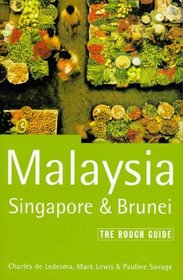Search -
Malaysia Singapore Brunei: The Rough Guide, Second Edition (2nd ed)
Malaysia Singapore Brunei The Rough Guide Second Edition - 2nd ed
Author:
INTRODUCTION At first glance there seems little to link Malaysia, Singapore and Brunei, not even geographical proximity. It's almost two thousand kilometres from the Malay Peninsula, across the South China Sea, to the separate Malay state of Sabah at the northern tip of Borneo. And Bangkok is as close to Kuala Lumpur and Singapore as is the B... more »
Author:
INTRODUCTION At first glance there seems little to link Malaysia, Singapore and Brunei, not even geographical proximity. It's almost two thousand kilometres from the Malay Peninsula, across the South China Sea, to the separate Malay state of Sabah at the northern tip of Borneo. And Bangkok is as close to Kuala Lumpur and Singapore as is the B... more »
ISBN-13: 9781858282329
ISBN-10: 1858282322
Publication Date: 11/1/1997
Pages: 688
Edition: 2
Rating: ?
ISBN-10: 1858282322
Publication Date: 11/1/1997
Pages: 688
Edition: 2
Rating: ?
0 stars, based on 0 rating
Genres:
- Travel >> Asia >> General
- Travel >> Asia >> Malaysia & Brunei
- Travel >> Asia >> Singapore
- Travel >> Asia >> Southeast




